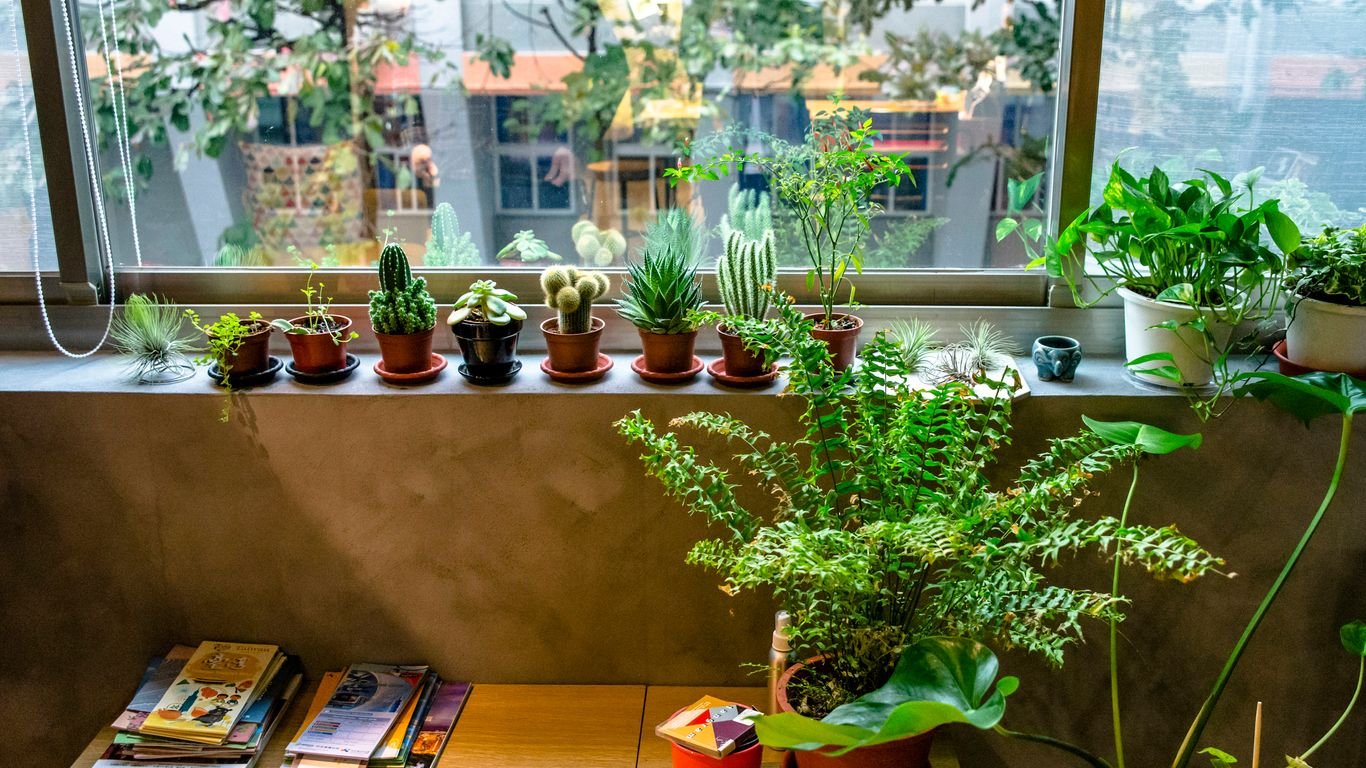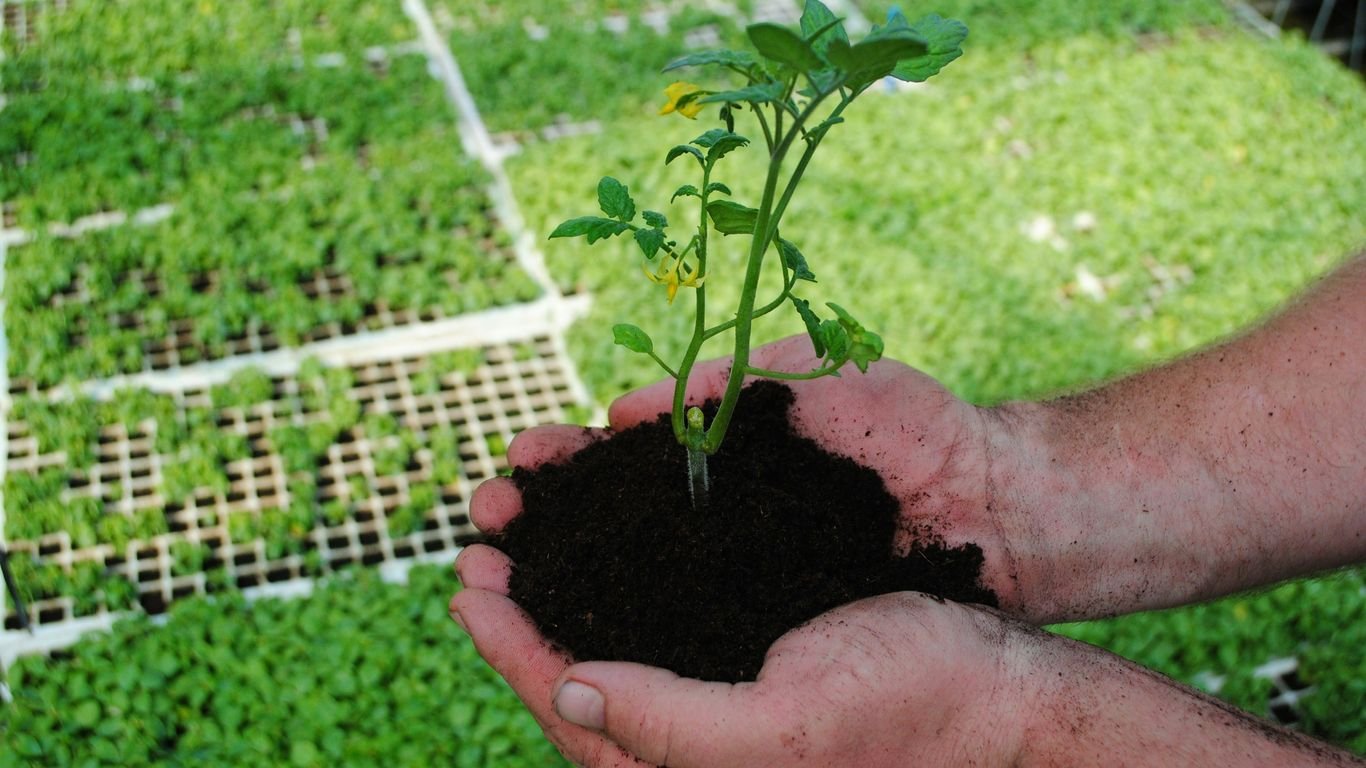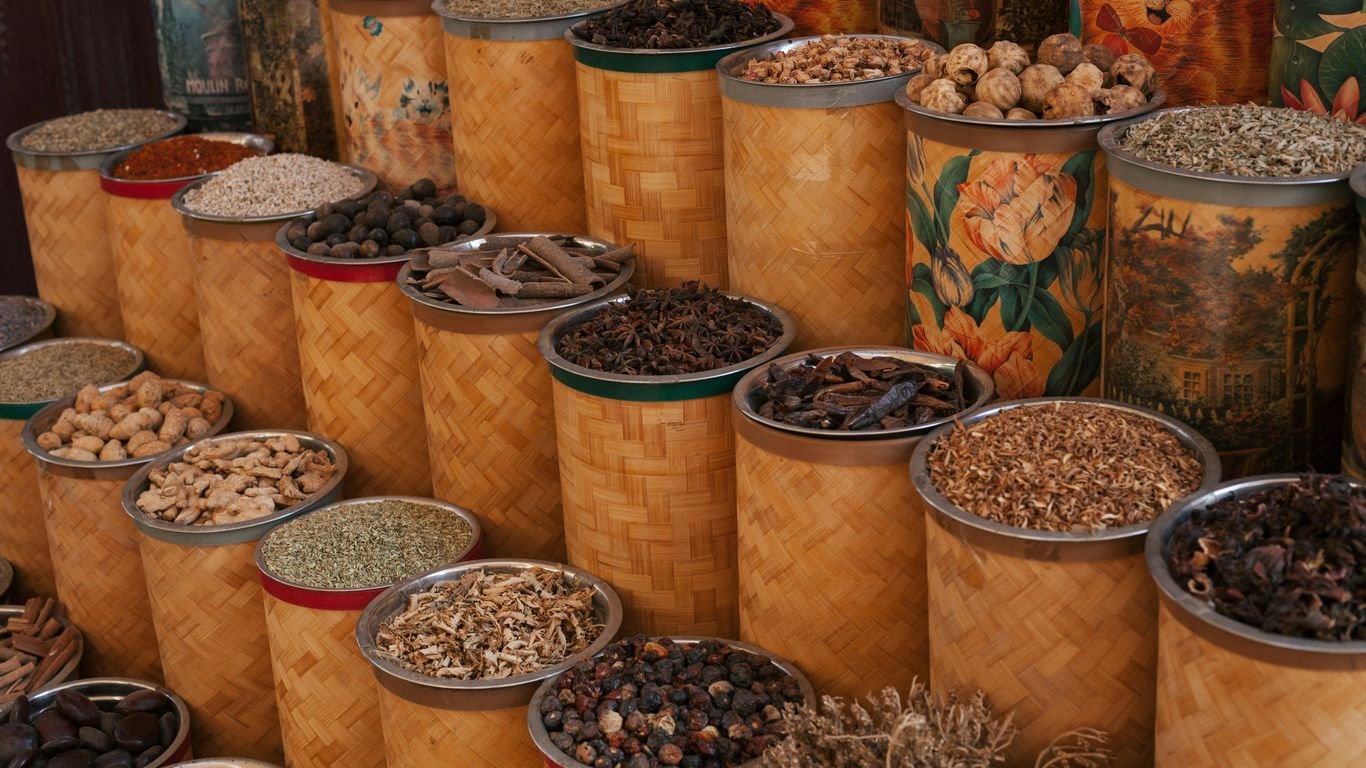Zone 5 January Gardening Checklist: Seed Orders and Indoor Planting

January in Zone 5 can feel like a waiting game, but there’s actually a lot we can do to prep for a strong gardening season. While the ground is frozen and the snow piles up, we get to focus on planning, ordering seeds, and even starting a few plants indoors. The zone 5 january gardening checklist helps us stay organized and make sure nothing slips through the cracks. It’s a good time to look back at last year, dream up new ideas, and get a head start on the growing season—even if we’re still bundled up inside.
Key Takeaways
- Reflect on last year’s garden and jot down what worked and what didn’t.
- Order seeds early from trusted companies, and keep track of your wish list.
- Start hardy vegetables, flowers, and herbs indoors to get ahead for spring.
- Clean, inspect, and propagate your houseplants while they’re inside.
- Take care of outdoor tasks like protecting trees and prepping tools for spring.
Planning Ahead with the Zone 5 January Gardening Checklist
Reflecting on Last Year’s Garden Successes and Challenges
January is pretty quiet for outdoor gardening in Zone 5, so we’ve got time to think back on what worked and what absolutely flopped last year. Maybe the tomatoes took off and the beans fizzled out, or we bit off more than we could chew with too many squash plants. We try to be honest with ourselves, jotting down anything that worked better than expected and stuff we’d never want to repeat.
- What crops thrived? Why?
- What was a headache (and is it really worth trying again)?
- Did we keep up with weeding, watering, and pest control, or did something slip through the cracks?
Setting aside time in January to reflect helps make sure we’re learning from past mistakes and successes, not just repeating them every year.
Rotating Crops and Plotting New Areas
We always map out what went where last season. That way, we can move things around this year—because putting the same plant family in the same spot too often can mean disease and pest problems. Plus, it just mixes things up and sometimes we stumble on a better layout or new companion plant pairing.
- Rotate heavy feeders (tomatoes, corn) with legumes or greens
- Avoid planting root crops in the same spot two years in a row
- Sketch a rough map of our beds and containers for this year
Using a Garden Journal for Smarter Planting
We really rely on a garden journal—it doesn’t have to be fancy. Even a spiral notebook or digital spreadsheet works for us. We list seed starting dates, transplant times, how much (or little) we actually harvested, and issues we notice. Having those notes means we don’t have to guess when things froze last spring, or which variety of lettuce everyone actually liked.
Here’s what we like to include in ours:
- How much of each thing we planted
- Weather notes: late frosts, spring rain, dry spells
- First and last harvest dates for each crop
- Pests or diseases (and what we tried to fix them)
- Plants or experiments that flopped or did way better than we expected
We aren’t always good at keeping this updated, but when we do, it helps our garden feel a little less chaotic every year.
Ordering Seeds and Catalogs for a Productive Season

January in Zone 5 is that point where we’re itching to get started, but the ground’s frozen solid. It’s prime time to curl up with some seed catalogs and dream about what this year’s garden could look like. Let’s break down our approach for a fruitful year, starting with those orders.
Choosing Reliable Seed Companies
When we look for seed suppliers, we want more than just a pretty catalog. We need:
- Germination rates that live up to their promises
- Clear details on varieties, so we know what we’re paying for
- Good customer service and simple ordering
Here’s a quick comparison table of qualities we look for in different companies:
| Seed Company Name | Shipping Speed | Vs non-GMO? | Heirloom Varieties | Customer Service |
|---|---|---|---|---|
| Local Grower Co. | Fast | Yes | Yes | Friendly |
| Big Box Seeds | Average | Sometimes | Few | Basic |
| Heritage Heirlooms | Fast | Yes | Yes | Responsive |
We’ve had the best luck with regional companies, but we aren’t afraid to try an online buy if the reviews are solid.
Exploring Heirloom and Open-Pollinated Varieties
This is our favorite part—finding tomatoes, beans, and peppers our grandparents would have loved. Going for these seeds means:
- They’re saved from year to year and not hybrids
- Unique colors, flavors, and shapes you can’t get in stores
- Preserving old lines for future generations
Best of all: Open-pollinated and heirloom seeds will let us save seeds for next season, cutting costs in the long run.
Keeping Track of Orders and Wish Lists
It’s easy to get carried away with all the variety, so we try to:
- Set a seed budget—otherwise, the catalog trap gets us every time
- Keep a spreadsheet or a simple notebook; we include the company, variety, quantity, and notes for next year
- Mark the date we expect delivery so we can plan our planting
Staying organized with our seed orders saves disappointment later—nothing’s worse than realizing we’ve forgotten a favorite variety or doubled up on something we hardly use.
We use January to strategize, order early to avoid sellouts, and get excited for the growing season ahead. Grab those catalogs and start plotting—spring sneaks up fast!
Starting Seeds Indoors: Getting a Head Start in January
Winter can make us itchy to plant, even when the snow piles up outside. Starting seeds indoors in January lets us scratch that itch while getting a jump on the growing season. Here’s how we make the most of those weeks when it feels like spring is years away.
Essential Supplies for Indoor Seed Starting
When it comes to sowing seeds indoors, we always try to keep things simple but effective. Here’s our basic checklist:
- Seed trays or recycled pots (washed out yogurt cups work great)
- Seed starting soil (lighter than regular potting mix—really helps)
- Spray bottle for gentle watering
- Good-quality seeds (picked in December when the catalogs rolled in)
- Labels and a marker to keep everything organized
- Grow lights, or the brightest window you’ve got
- Heat mat (our seedlings sprout faster with a little warmth)
We also stack old newspapers under all the trays. That way, we don’t end up with water rings and dirt all over the dining room table. Experience speaking!
Tips for Successful Germination in Zone 5 Winters
Getting seeds to sprout in January is mostly about managing three things: soil temperature, moisture, and light. Here are some lessons we’ve picked up—sometimes the hard way:
- Don’t bury seeds too deep; most just need to be pressed into the soil.
- Keep soil moist (not soaked) with a gentle misting.
- Put trays on a heat mat or on top of the fridge if your home is really chilly.
- Remove any cover or dome as soon as most seeds poke up (to avoid mold).
- Turn seedlings daily if you use a sunny window—otherwise, they’ll stretch toward the light.
When our seedlings get leggy and weak, it’s nearly always due to low light or too much heat without enough brightness.
Best Practices for Light, Heat, and Moisture
Seeds are a bit needy at first, but we’ve found their "requests" are simple and repeatable. We aim for:
| Condition | What We Do |
|---|---|
| Light | 14-16 hours under a grow light or NE-facing window |
| Heat | 68-75°F for most veggies |
| Moisture | Mist until sprouting, then bottom-water twice a week |
- We avoid overwatering—damp, not soggy, is the goal.
- It’s fine to keep a small fan in the room to boost air flow and prevent mold (plus, it makes the seedlings sturdier).
- If we see condensation on the lids or domes, we crack them open a bit to cut down on mildew.
Honestly, there’s something nice about tending to seedlings while the wind rattles the windows. It gives us an excuse to look forward to spring, even if it’s still a long way off.
Zone 5 January Seeds to Start Indoors
January always feels like the longest month in Zone 5, and the ground outside is frozen solid. But inside? Now’s a great time to kick off the gardening season by starting a handful of seeds indoors. Starting seeds now gives us a big jump on spring, especially in zones where winter drags on. Here’s how we figure out what to start, when, and why it matters for our gardens down the road.
Vegetables That Thrive with Early Indoor Sowing
Not every veggie loves a head start, but there are a select few that really benefit when we plant them early inside. For those of us in Zone 5, January isn’t for tomatoes yet, but some crops fit the bill:
- Onions & leeks: These need a seriously long growing season. We start these in seed trays now so they’re strong enough for the garden when it finally thaws.
- Celery: Slow to sprout, so it’s good to get it going early.
- Herbs like parsley: Parsley germinates slow, so it deserves an early start too.
Here’s a simple table to show the best timing:
| Crop | Weeks Before Last Frost | Start Indoors |
|---|---|---|
| Onions | 10-12 | Mid-Late Jan |
| Leeks | 10-12 | Mid-Late Jan |
| Celery | 10-12 | Mid-Late Jan |
| Parsley | 10-12 | Mid-Late Jan |
Hardy Flowers and Herbs to Begin Inside
Sometimes we crave a bit of color, even if it’s just under grow lights. Cold-hardy annuals and perennials don’t mind getting a head start, especially the ones that take ages to sprout:
- Snapdragons: Slow to grow, but worth it for early blooms.
- Echinacea: When started now, these perennial favorites are just ready for their first outdoor summer.
- Lavender: Needs warmth for germination and extra time indoors.
*Many perennials even need a little time in the fridge to mimic winter, a process called stratifying. Be sure to check your seed packets!
Timing Your Planting for a Spring Head Start
We always watch our last frost date and count backwards. For Zone 5, the safest bet is around mid-May. January sowing is all about crops that need 10-12 weeks indoors, since it takes that long for seedlings to get robust enough for transplanting outside.
Here’s a quick system we use:
- Look up our region’s average last frost date (for most of us, that’s May 15).
- Mark 10-12 weeks before that date on the calendar.
- Sow long-season crops and hardy perennials then.
Planting seeds now might seem a bit optimistic in the heart of winter, but it keeps us connected to the coming season—and gives us a much-needed taste of green in the grayest months.
All it takes is a little commitment to the calendar, and by the time May comes around, we’ll have trays of sturdy seedlings, ready to bring our gardens back to life.
Caring for Indoor and Overwintered Plants

Cleaning and Inspecting Houseplants
We always kick off January by checking our houseplants for any unwelcome guests or signs of stress. It’s easy to forget about our leafy friends this time of year, but a quick routine can really help them stay healthy until spring:
- Gently wipe down leaves with a damp cloth to remove dust and let the plants breathe.
- Look over stems, undersides of leaves, and soil for any insects or sticky residue.
- Prune off any yellowing or dead leaves, making sure your tools are clean before and after so you’re not spreading any issues between plants.
Making this part of your weekly routine reduces the chances of bigger problems down the road.
Controlling Pests on Indoor Greenery
Just because it’s winter doesn’t mean pests take a holiday. We usually see things like fungus gnats or spider mites pop up when the air gets dry and the heat is on. Here’s how we handle it:
- Move any affected plants away from the rest, just to be safe.
- Let the top inch of soil dry out before the next watering—fungus gnats especially hate dry conditions.
- Use soapy water spray (a few drops of mild dish soap per quart) for soft-bodied bugs, repeating every few days if needed.
If you’re persistent, most pest problems shrink pretty quickly. The key is catching them before they get out of hand.
Propagation Techniques to Expand Your Collection
Winter is a sneaky-good time to grow your indoor plant family. With everything quieter in the garden, we find ourselves with a little more time to give propagation a try. Some favorites to start this month:
- Stem cuttings from pothos, philodendron, and coleus—just snip a healthy stem, stick it in water, and wait for roots.
- Division is great for plants like snake plants or peace lilies. Gently pull apart the clump, making sure each division has roots attached, and pot them up.
- Leaf cuttings for succulents—let the leaf dry a day or two before tucking it into a tray of moist soil.
Here’s a quick table to keep track of propagation methods for popular indoor plants:
| Plant | Propagation Method | Approx. Rooting Time |
|---|---|---|
| Pothos | Stem Cuttings | 2-3 weeks |
| Snake Plant | Division/Leaf | 4-6 weeks |
| African Violet | Leaf Cuttings | 3-5 weeks |
| ZZ Plant | Division | 4+ weeks |
| Spider Plant | Plantlets | 2-4 weeks |
Experimenting a bit now might set us up with fresh, homegrown plants to share with family or to fill in blank spots once the growing season rolls around. Plus, it’s just fun to watch roots and new leaves appear when everything else looks so sleepy outside.
Outdoor Winter Garden Care on the January Checklist

January in Zone 5 means we’re smack in the middle of winter’s chill. Our gardens may be under snow, but there’s still work to do outside to make sure everything comes through in one piece. Let’s go through a few simple things we all can tackle this month.
Protecting Trees and Shrubs from Heavy Snow and Ice
You know how winter storms heap loads of snow and ice on everything? That much weight can split branches and topple young trees. Here’s what we do:
- Shake off heavy snow with a broom, especially after big storms.
- Gently brush ice away—if it’s stuck solid, wait for it to melt rather than breaking branches.
- Wrap young tree trunks with tree wrap, burlap, or recycled cardboard to guard against cracking and critter damage.
- For shrubs right under the roofline, use boards or stakes as a makeshift shield against snow slides.
If we see a branch start to bend under icy buildup, we keep our hands off—snapping frozen wood can only make things worse.
Winter Mulching and Soil Preparation Tips
Don’t let freezing temps fool us. This time of year is great for taking care of the soil and beds:
- Once the ground’s frozen, we lay a solid 2 to 4-inch mulch layer around perennials and root crops.
- Straw, shredded leaves, sawdust, and even old manure all work to insulate, prevent soil erosion, and keep roots warm.
- If we left root veggies in the ground, we cover them thickly so we can keep harvesting a little at a time—nothing beats a winter carrot!
Here’s a quick look at good mulch options this time of year:
| Mulch Type | Extra Benefits | Rec. Thickness |
|---|---|---|
| Straw or Hay | Easy to spread, light | 3-4 inches |
| Shredded Leaves | Free, breaks down fast | 2-3 inches |
| Sawdust | Slow to break down | 2 inches |
| Pine Needles | Adds acidity, light | 2 inches |
| Old Manure | Boosts soil nutrition | 3 inches |
Storing and Maintaining Garden Tools and Equipment
We’ve probably got tools sitting out in the elements. January’s the perfect time to:
- Clean up clippers, pruners, shovels, and rakes with a wire brush or steel wool.
- Rub a little oil on the metal to keep them from rusting.
- Sharpen blades where needed—seriously, we’ll thank ourselves come spring.
- Drain fuel from gas engines (lawn mowers, tillers) and store them safely away from snow and damp.
And if you’re like us, garden shed chaos is a thing—take a rainy afternoon to organize and tidy up tools. It’s amazing what we forget we even owned!
Getting a few winter chores done in January keeps our gardens healthy and saves us headaches when the thaw finally comes.
Let’s keep chipping away week by week. Our spring selves will be grateful.
Recordkeeping and Goal Setting for Zone 5 Gardeners
Gardening in Zone 5 means keeping our plans flexible but organized, especially this time of year. Good records and clear goals make every spring easier and more productive. If you’re anything like us, seed packets seem to multiply and last year’s notes are mysteriously nowhere to be found when we need them the most.
Creating a Seed Starting and Transplant Calendar
We like to keep things straightforward with our seed schedules. Using our average last frost date as a marker, we work backwards and jot down when to start each type of seed. Here’s a simple version of what our table might look like:
| Vegetable | Weeks Before Last Frost | Seed Starting Date |
|---|---|---|
| Onions | 10-12 | Mar 1 |
| Tomatoes | 6-8 | Apr 1 |
| Broccoli | 6-8 | Apr 1 |
| Peppers | 8-10 | Mar 15 |
This keeps us from forgetting (again) to start peppers on time or trying to squish too many seed trays onto one sunny windowsill.
Monitoring Indoor Seedling Growth
When it comes to seedlings, tracking their progress helps us figure out what worked and what flopped. We make simple lists like:
- Date seeds were sown
- Germination date
- Notes on growth (leggy, sturdy, yellowing, etc.)
- Problems like fungus or low germination
That way, when March rolls around, we’ve got a clear idea of what to change. Sometimes old yogurt containers are the best seedling pots—but only if you poke drainage holes!
Sometimes recordkeeping seems like work, but trust us, nothing beats flipping through last year’s notebook and remembering exactly which tomatoes actually made it to the table.
Tracking Weather and Frost Dates for Maximum Success
Zone 5 weather is anything but predictable. We make note of weird frost snaps, heat waves, or soggy springs.
- Jot down the last and first frost dates each year
- Watch for patterns: Was it wetter or drier than usual?
- Keep a monthly mini-forecast at the back of your garden journal
Usually, we learn the hard way which cold snaps kill off an early planting. But when we write it down, we save ourselves a lot of head-scratching the next season.
Staying on top of our records and goals isn’t always glamorous, but we’re always grateful for the effort when it’s time to seed, transplant, and finally harvest. It all adds up to a better garden, year after year.
Wrapping Up Our January Gardening Plans
Alright, so that’s our January checklist for Zone 5 gardeners. Even though it’s cold and the ground is frozen, there’s still plenty we can do to get a jump on spring. Ordering seeds, cleaning up our indoor plants, and maybe even starting a few seeds inside—it all helps scratch that gardening itch while we wait for warmer days. Let’s keep track of what works (and what doesn’t) in a notebook so we can make next year even better. Here’s to a fresh start and a great growing season ahead. We’ve got this!
Frequently Asked Questions
What seeds can we start indoors in January for Zone 5?
In Zone 5, we can start seeds for onions, leeks, celery, and some hardy greens like kale and Swiss chard indoors in January. Some flowers, such as pansies and snapdragons, can also be started early. These need a long growing time before they can go outside.
How do we know when to start seeds indoors for our area?
We should check our average last frost date, which is usually around mid-May in Zone 5. Then, we count backwards from that date, usually 6-10 weeks, to find the best time to start each type of seed indoors. Seed packets often have this information to help us plan.
What supplies do we need for starting seeds indoors?
We need seed trays or small pots, seed starting soil, seeds, a spray bottle for watering, and a warm place for the seeds to sprout. Grow lights or a sunny window help seedlings grow strong. A heat mat can help seeds germinate faster, especially in cold homes.
How do we keep track of our seed orders and planting schedule?
We use a garden journal or a notebook to write down what seeds we order, when we start them, and how they grow. Making a calendar for seed starting and transplanting helps us stay organized and avoid missing important dates.
What should we do to care for our indoor and overwintered plants in January?
We check our houseplants for dust and pests, wipe their leaves with a damp cloth, and make sure they are not too close to cold windows. We also look for bugs and remove any dead leaves. If we want more plants, we can try taking cuttings to grow new ones.
How can we protect our outdoor garden in winter?
We gently brush snow and ice off tree and shrub branches to prevent breakage. We use mulch to cover soil and protect plant roots from freezing. It’s also a good time to clean, sharpen, and store our garden tools so they’re ready for spring.






